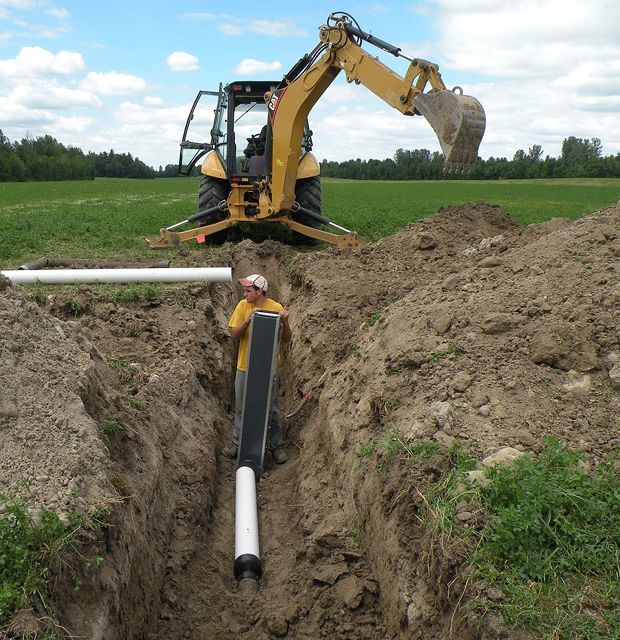NNYADP Funding Agricultural Tile Drainage Research in Northern New York
 In 2013, the Northern New York Agricultural Development Program (NNYADP) is funding research to evaluate the agricultural benefits and environmental impacts of using tile drainage on farms.
In 2013, the Northern New York Agricultural Development Program (NNYADP) is funding research to evaluate the agricultural benefits and environmental impacts of using tile drainage on farms.
The use of tile drainage has been a critical best management practice on American farms since 1835. In the early 1900s, William H. Miner, for whom the agricultural research institute in Chazy, NY, is named, championed the use of patterned tile drainage to dramatically improve drainage efficiency and crop production potential on poorly-drained North Country soils.
The farmer-driven NNYADP has identified the need for research to better understand how the use of tile drainage interacts with the soil, crop production and the environment in the Lake Champlain Basin region of Northern New York, where agriculture is considered a major nonpoint source of phosphorus to the lake.
Tile-drained fields generally reduce total phosphorus loss compared to undrained fields, largely due to reducing surface runoff. However, few controlled field studies have been conducted over multiple years in the Northeast to quantify crop and soil benefits as well as potential water quality risks and benefits from tile-draining fields.
Project leader Eric Young, Agronomist and Soil Scientist at the W.H. Miner Agricultural Research Institute, says, “Tile drainage is an economically and environmentally important management practice for dairy and crop farmers. On poorly-drained soils, properly installed and maintained tile drainage systems produce greater crop yields; reduce erosion and surface runoff; decrease the potential for soil compaction; enhance soil quality, and lead to greater farm profitability.”
“However, under unique conditions, tile drainage can accelerate the loss of nitrate-nitrogen and dissolved phosphorus, two important crop nutrients that often limit yield, but also have the potential to contribute to water quality degradation,” Young adds.
Long-term field runoff plots have been established on a cool season grass hay field at the Lake Alice Wildlife Management Area in Chazy, NY. The trial plots will be managed as a typical dairy-based grass forage production system with nitrogen applied in early spring and manure nutrients applied after each cutting.
The research team, which includes a University of Vermont graduate student, will capture and evaluate surface and subsurface drainage water from the tile-drained and undrained fields during the growing and non-growing seasons to quantify how soils, crop management and other field conditions affect critical nutrient conservation and loss.
The Northern New York Agricultural Development Program provides practical, on-farm research, technical assistance, and outreach to farmers in Clinton, Essex, Franklin, Jefferson, Lewis and St. Lawrence counties. Learn more about agriculture in Northern New York and find NNYADP project results at www.nnyagdev.org. -30-
Posted: June 17th, 2013 under Agricultural News, Business News, Education News, Environmental News, General News, Northern NY News.
